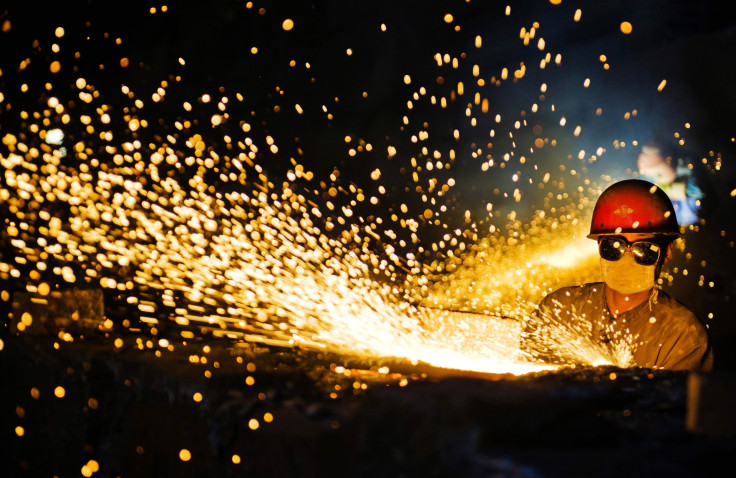China's Economy Shows Strong Manufacturing, Its Stock Market Steady Friday While Other Asian Markets Fell After US Rout

(Reuters) - Asian shares were mostly under water on Friday after a sudden slump on Wall Street spilled over globally, though a surprisingly strong pick up in manufacturing helped Chinese markets hold at seven-month highs.
In a promising omen for world growth China's official measure of industrial activity (PMI) rose to 51.7 in July from 51.0 in June, beating forecasts of 51.4 and the highest in 27 months.
The recovery was also broad based with 10 out of the 13 sub-indices pointing to improvement from the previous month.
The survey added to evidence that Beijing's stimulus efforts were gaining traction, and followed news that growth in the United States had rebounded from a winter lull.
All of which helped China's stock markets top up the week's hefty gains. The CSI300 of leading Shanghai and Shenzhen A-share listings rose 0.8 percent, having surged in recent sessions to reach its highest so far this year.
But it could not entirely offset the drag from Wall Street, where the S&P 500 suffered its biggest daily loss since April.
In Europe, spreadbetters expected opening falls of between 0.2 percent and 0.3 percent for the FTSE 100, DAX and CAC 40.
MSCI's broadest index of Asia-Pacific shares outside Japan was off 1 percent. Japan's Nikkei did recoup some of its early slide to be down 0.6 percent, as did the broader Topix.
The losses in Asia were modest compared to the 1.88 percent drop in the Dow, or the S&P 500's 2 percent fall.
Some had blamed the sell off on data showing that U.S. labor costs recorded their biggest gain in more than 5-1/2 years and stoking speculation the Federal Reserve could raise interest rates sooner than previously thought.
But, after an initial wobble, Fed funds futures edged higher on Friday as investors pared back chances of an earlier hike.
Likewise, yields on two-year Treasury paper dropped back to 54 basis points, having been as high as 59 basis points on Wednesday.
DOLLAR UP, OIL DOWN
Aiding bonds was an unexpected, and inexplicable, 10-point plunge in the Chicago purchasing managers index to 52.6 in June.
That was the sharpest drop since late 2008 and sparked talk the national survey of manufacturing, known as the ISM, might surprise on the downside later on Friday.
Also due is the ever-influential U.S. payrolls report for July. While analysts expect another healthy gain of 233,000, a further drop in the jobless rate could add to investor jitters over interest rates.
All the muttering about when the Fed might hike has been a boon for the U.S. dollar in recent weeks. Measured against a basket of its peers, the dollar gained 2 percent in July for its best monthly performance in 1-1/2 years.
The dollar bought 102.92 yen on Friday, after peaking at a four-month high of 103.15. The euro traded at $1.3386, still uncomfortably close to the nine-month trough of $1.3366 plumbed earlier in the week.
If investors really were worried about U.S. inflation it did not show in the gold market, where the metal was down at $1,284.20 after touching a six-week trough.
Oil prices also took a spill amid signs of plentiful supply, which has potentially positive implications for global inflation and economic growth.
U.S. crude oil fell to its lowest since March around $97.66 a barrel, while Brent was off 10 cents at $105.92. Brent lost more than 6 percent in July, its biggest monthly decline since April 2013.
(Editing by Eric Meijer, Shri Navaratnam and Simon Cameron-Moore)
© Copyright IBTimes 2024. All rights reserved.
Join the Discussion
Editor's pick







